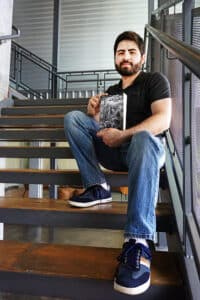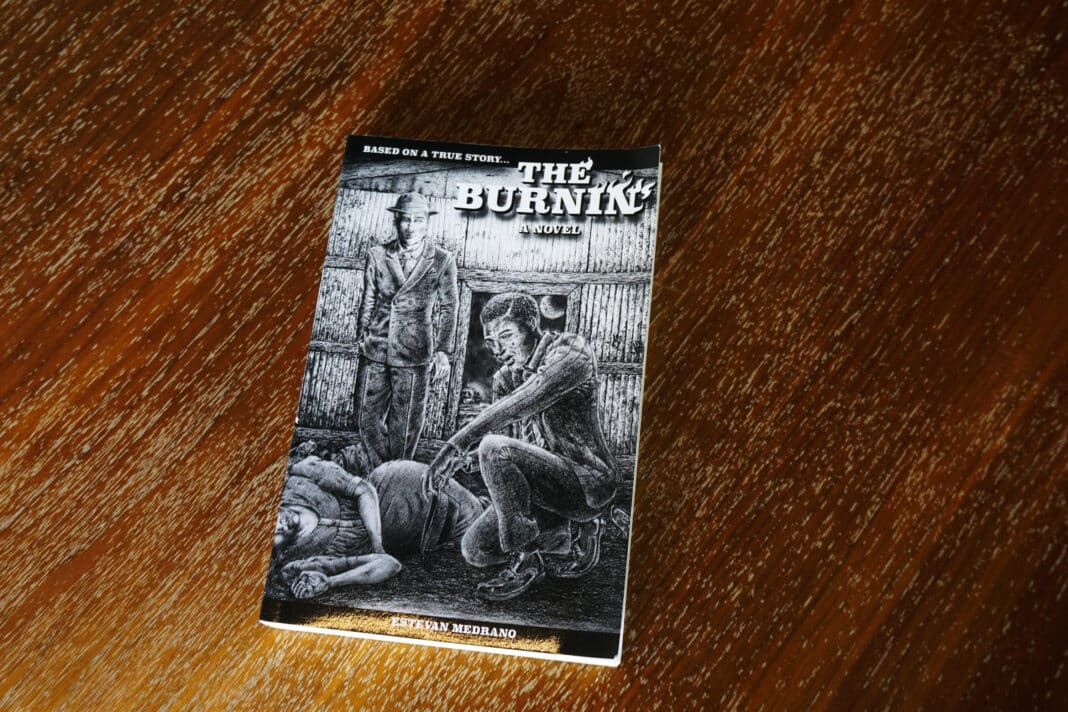
A horrific fire that swept through the Rhythm Club dance hall in Natchez, Mississippi, on April 23, 1940 provides the backdrop for “The Burnin,” Brownsville native Estevan Medrano’s first novel, a third-person account of an event that killed 208 African American residents in the still-segregated town of only a few thousand.
Medrano, who moved to New York City four years ago after earning his master’s in film production at the University of North Texas in Denton, teaches film production online through Southern Arkansas University.
“As terrible as the pandemic was, when it came it brought everything to a standstill. In New York you literally had filmmaking projects taking place on every street corner. With the pandemic, all of that suddenly stopped,” he said in an interview last week.
Medrano recently returned to Brownsville, last having visited in February 2020. His father is history professor Manuel Medrano, who retired from the University of Texas at Brownsville about the time it split with Texas Southmost College.
Having grown up with history all around him, Medrano was well acquainted with the tools of historical research, so when the pandemic provided so much spare time, he got busy.
From among a small group of potential projects, he said he kept coming back to the fire in Natchez, which occurred at the height of World War II. He found one small documentary about the Rhythm Club fire and numerous newspaper clippings. Although you have to dig, with events that happened after about 1920, there will be newspaper stories, he said.
“The Burnin,” deals with the Rhythm Club fire’s heartbreaking aftermath through the eyes of a coroner, a nurse and an arson detective, all fictional characters based on historical fact. Because it takes place during segregation, Blacks and Caucasians were separated; legally only a Black coroner could embalm the body of an African American victim. There were only two hospitals, one for Blacks, one for whites.
“The reason it was such a catastrophe is because it was at a time fire laws were still not enforced anywhere near as strictly as they are now,” Medrano said. “In fact, that event is a major reason we have the capacity laws we have now and you need two exits in every building — because the way that event was set up everything that could go wrong did go wrong. They actually decorated with the moss that grows on the trees just to create the aesthetic, but that moss is extremely flammable.”
He said historical circumstances combined with the state of emergency medical services to make things worse. Doctors made major advances in the ability to treat second-degree and third-degree burns only a few years later.
“It was a wooden building. It just became a fire trap, as described by many witnesses. It was a segregated venue, so everyone that passed away in that accidental fire was African American. According to Southern law at the time they had to be analyzed by an African American coroner,” of which there were only three.
“So many of the laws were overlooked because there were so many bodies. … For example, white newspapers allowed, for the first time, African Americans to print out their testimonies. White coroners donated caskets. A lot of those laws were overlooked because there was such a need in the aftermath. … This event really kicked off a lot of the laws, especially in the South. Even today in the South you have a lot of these giant one-room venues,” he said.
The event in Natchez, even though overshadowed by World War II headlines and the similar Boston Grove fire a few years later with twice as many deaths, made national ripples.
“It caused an overhaul of fire safety laws and things we think of as commonplace today, like arson investigators, really kicked off after that event.”
The book runs 338 pages. Medrano, an artist who has been drawing since he was a child, illustrated the cover. He says he is working on two more books, one that takes place in Texas during the 19th century. The other takes place in Mesoamerica.
“The Burnin” is available on Amazon.




